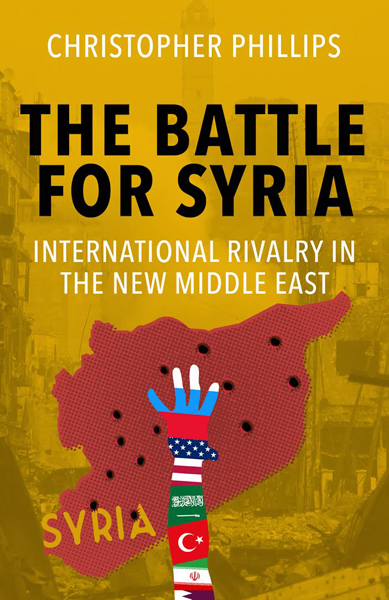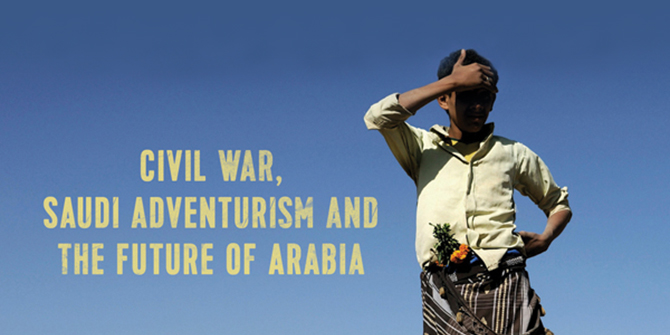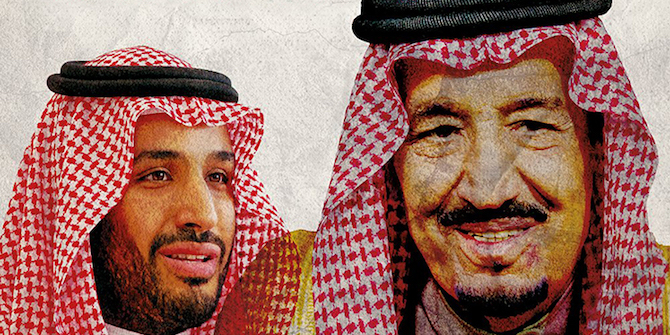by Ian Black
Syria’s war is far from over but it is already the subject of a large number of books – many about the internal dynamics of the conflict or the headline-grabbing jihadis who dominate perceptions of it. Christopher Phillips’ impressively-researched study of its international dimensions is an important contribution to understanding the bleak story so far. Based on interviews with officials and a mass of secondary sources, it identifies and examines the key external components of the worst crisis of the 21st century: the fading of American power, Russian assertiveness, regional rivalries and the role of non-state actors from Hezbollah to ISIS.

Phillips’ principal argument is that the Syrian uprising of 2011 – pitting ordinary people against an unforgiving regime – was transformed into a civil war because outside involvement helped escalate and sustain it – and of course still does. Bashar al-Assad’s brutal crackdown was followed by other actions that made a significant difference: ‘omni-balancing’ Qatar’s early backing for rebel groups despite its own limited capacity; ill-considered US and Western calls for the Syrian president’s departure; Turkish and Saudi sponsorship of anti-Assad forces; and, from the start, Russian and Iranian support for Damascus that raised the stakes and created an asymmetry of strategic commitment that persists to this day.
Inaction mattered too – whether in the lack of adequate assistance for the rebels or Barack Obama’s failure to response to the breaching of his famous ‘red line’ when Assad used chemical weapons in Ghouta in August 2013. Phillips correctly acknowledges the lingering after-effect of the false prospectus of the 2003 Iraq war on the British parliamentary vote against military action but I think underplays the wider paralysing role of that intervention.
It was the misfortune of Syrians that their chapter of the Arab uprisings opened in what the author succinctly characterises as ‘an era of regional uncertainty as the perception of US hegemony was slowly coming undone’. Obama’s reluctance to get involved may well have made sense after the lessons of Iraq, Afghanistan and Libya, but he was unable to manage his allies and, crucially, raised unrealistic expectations amongst Syrians and the Gulf states. Only ISIS, with its transnational agenda, moved him to act.
The landmarks of the crisis are familiar but they are illuminated by some fascinating details: Before 2011 knowledge about Syria was surprisingly limited, so there was insufficient understanding of the differences between its security-obsessed, ‘coup-proofed’ regime and those in Tunisia, Egypt and Bahrain. In 2009, the US Department of State Syria desk consisted of one official; of 135 Turkish diplomats working on the Arab world, only six spoke Arabic. Francois Hollande’s diplomatic adviser, wedded to the ‘domino theory’ that meant Assad would follow Ben Ali, Mubarak and Gaddafi, didn’t want to hear the nuanced reports from the well-informed French ambassador in Damascus. Mistaken analysis drove what Phillips calls the ‘escalator of pressure’. Russia, with better intelligence, understood that Assad was more secure than others predicted (or wanted to believe) and that the appetite for western involvement was limited.
If underestimating Assad’s durability was a key failure, that was compounded by over-stating the capabilities and cohesiveness of the opposition. Sponsorship by rivals who prioritised their own agendas, misleading extrapolations from the Libyan example, inevitable tensions between the external opposition and fighters on the ground, and the exclusion of the Kurds were all highly damaging. Policy towards the armed rebel groups was incoherent: despite vast expenditure, no foreign state was able to gain leverage over them.
International and regional institutions performed little better, Phillips argues. The short-lived Arab League mission to Syria was led by a Sudanese general linked to the genocide in Darfur. UN envoys Kofi Annan and Lakhdar Brahimi failed to overcome US and Arab resistance to Iran taking part in the 2012 Geneva conference, thus excluding a key player at a sensitive moment. Staffan de Mistura shuttled between parties who refused to even meet each other in Geneva, where the Syrian government delegation specialised in stonewalling and abuse. It has not been a case of third time lucky for the UN. ‘Everybody had their agenda’, in Brahimi’s words, ‘and the interests of the Syrian people came second, third or not at all’.
This judicious and measured book stands well back from the Twitter-driven ‘war of narratives’ that has distorted too much media reporting on the Syrian conflict. In the heat and controversy of complex and terrible events, it is helpful to pause and look coolly at the big picture. But it is sobering to contemplate the damning evidence of how outside actors helped fan the flames of ‘an internationalised civil war’ without any end in sight.







It is convincing enough to assume that there exists post-American Middle East which creates a kind of power (geo-political) vacuum to entice Russia, Iran, Saudi Arabia, Qatar, and Turkey into competing with the dwindling influence of the United States (US) in the Middle East; the battle for Syria is one such example where external forces are contending for dictating their terms. This is the central idea of Christopher Phillips’ book, “The battle for Syria: International rivalry in the new Middle East”, published by Yale University Press in 2016.
In the post-Cold war era, Syria has been enjoying an interesting combination of dynasty and socialism, led by President Bashar al-Assad, who belongs to Shia Alawi minority tribe (12% of the population) ruling over the Sunni Arab majority (65%). After December 17, 2010, when Mohamed Bouazizi immolated himself in Tunisia and sparked the Arab Spring of awakening, Deraa was the first Syrian city where anti-Assad slogans were heard from teenagers in early March 2011. The latent period of two and a half months was enough to let the Syrian regime brace the challenge.
On page 48, Phillips writes: “[I]t is quite possible that Syrians would have remained largely passive were it not for the trigger of the Arab Spring, which served as both an inspiration and a guide…Technology helped facilitate protest…It took days and weeks for Syrians and the world to learn about the Hama massacre in [February] 1982 [to quell the revolt of the Muslim Brotherhood], but in 2011 technology [e.g. internet, satellite television, Smartphone, social media and al-Jazeera] allowed instant information.” Here, whereas Phillips says that the presence or absence of technology to spread information makes a difference between the reaction of people to incidents in 1982 and 2011, he does not mention the significance of the authenticity of information to be spread through technology. Ironically, Phillips does not value the role of Wikileaks for giving people access to the raw truth – and not disinformation – spread through the prevailing technology in Tunisia leading to the Arab Spring in 2011. In the bibliography section, only one reference about Wikileaks – and that is related to “Ankara’s new foreign policy” – is found on page 288. Perhaps, Phillips does not appreciate that, more than technology, the difference lies in the legitimacy of information being bandied about, and that the revelation of information through Wikileaks became the immediate reason for the making of the Arab Spring.
Phillips differentiates between uprising and civil war in Syria but considers 2011 an important year in both cases. From page 50 to 57, Phillips comments on uprising. He explicates two main pre-emptive modes of appeasement adopted by the Assad regime to keep Syrians in general away from toppling it through any uprising be it in the name of the Arab Spring, unlike Iraq, Tunisia, Egypt and Libya. The first mode is contingent on five buy-ins such as offering economic benefits to the Sunni merchant and middle class, extending patronage to important tribes, launching propaganda to depict Bashar al-Assad a reformer, avowing secularism of the regime to offer solace to secular Sunnis against Islamism and Jihadism and keeping Sunni-Alawi (Shia) tensions lower, and resorting to the appeal of stability be valued by the masses. The second mode is resorting to two coup-proofing strategies such as avoiding army’s defection by buying its loyalty and resorting to spying (or “Mukhabarat” which were 15 agencies by 2011) on the regime, general population and each other. Moreover, the Assad regime has protected itself not only by resorting to selective – and not wide-spread – violence against protestors through the security forces and Alawi pro-Assad non-state actors such as Shabiha but also by following a reconciliatory policy towards Kurds.
The Assad regime has come into the grip of two major limitations. First, the UNSC Resolution 1973 which, on March 17, 2011, gave mandate to NATO to “intervene to protect anti-regime demonstrators that Gaddafi had threatened to crush” deters Assad from using brute force against protestors – to avoid any international intervention, as mentioned on page 56. Secondly, the caution given to Syria by US President Barack Obama on August 20, 2012, not to cross the red line of using chemical weapons against rebels closes the option of suppressing rebels, as mentioned on page 175. Hence, whereas the measures taken by the Assad regime has enabled it to survive the uprising, the limitations imposed from outside have made it surrender Syria to a civil war.
On page 196, Phillips writes: “Seeing advantage when the Syrian uprising turned into a civil war [by December 2011] … It eventually acquired sufficient supporters and territory inside Syria to rename itself the Islamic State of Iraq and al-Sham (ISIS) in April 2013”. This paragraph shows that December 2011 was the time when Syria was descending into a civil war while the US forces were withdrawing from Iraq as per the 2008 electoral pledge made by US President Barack Obama. This is the point in time which Phillips considers to have given an impression of perceived decline of US power in the Middle East and which consequently shapes a new geopolitical order in the region. Here, Phillips forgets to mention the significance of the Status of Forces Agreement between Iraq and the US signed in 2008 and expired on December 31, 2011, and which the government of Iraq’s Prime Minister Nouri al-Maliki refused to extend owing to domestic political opposition. The extension could have afforded the US some leeway to station a residual (combat) force in Iraq to counter any immediate threat, as the US and NATO signed similar agreements with Afghanistan in December 2014 for another ten years.
If the Eisenhower doctrine (January 05, 1957) and the Carter doctrine (January 23, 1980) were any guide, the assumption of post-American Middle East would be a fallacy. Similarly, if the Clinton doctrine (February 26, 1999) were any guide, US planes would soon be hitting targets in the troubled spots in Syria. Neither is there any dwindling of US influence in the Middle East nor is there any new Middle East in the making. Nevertheless, the Afghanistan model can still be created in Syria by persuading the Assad regime to introduce reforms to make the government as representative as possible to let pro-democratic Syrians back the democratic process. The Syrian rebels of all hues can be treated as the Taliban and al-Qaeda are dealt with in Afghanistan.